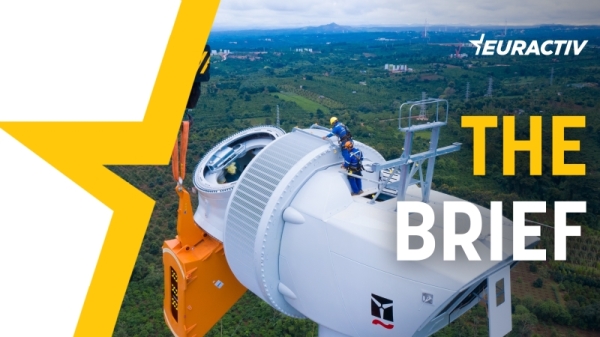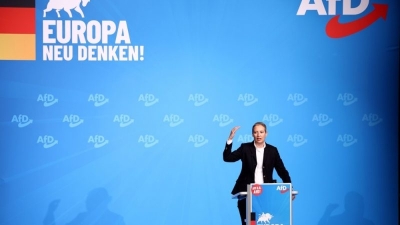The Brief – Will wind take it all?

With China and the US striving to dominate the world’s future clean-tech markets, European politicians have developed a renewed appetite for protectionism and Europe’s wind power industry is poised to harvest this drive.
To recap: Europe was scarred when the global financial crisis – alongside bad business choices driven by the gold rush mood of the first feed-in tariffs – saw the solar photovoltaic supply chain move to China.
When EU policymakers realised in the summer of 2022 that the US planned to subsidise clean technologies at scale, panic set in.
The EU’s Net-Zero Industry Act (NZIA) – the bloc’s paltry protectionist response, not backed by much money – is due to be voted on by the European Parliament on 23 April.
The law now lists a whopping 18 technology categories where the EU wants to produce 40% of annual deployment needs by 2030, but this ambition is neither serious nor realistic.
These include traditional technologies like solar and wind, but also a swathe of nuclear categories, as well as “wind propulsion and electric propulsion.”
The NZIA is more of a shotgun than a scalpel, more bazooka than targeted measure. Given the EU’s limited fiscal headway – Europe is embracing a return to more austere budgets as we speak – a certain prioritisation is in order.
Europe’s wind power industry has successfully convinced policymakers to treat it like a beloved only child. Commission boss Ursula von der Leyen called it a “European success story” in her annual address to the EU.
“The future of our clean-tech industry has to be made in Europe,” she stressed. Appetite for protectionism, indeed.
European “clean-tech” lobbyists have seized on this. Their common refrain is that they will eventually be swallowed by China, where labour is cheap, regulations limited, domestic markets large, and cash bountiful.
But not all industries are the same, nor do they have the same starting point—attempting to apply the same strict 40% threshold to them all risks becoming a waste of resources.
The wind industry benefits from wind turbines being a high-tech product where most of the labour occurs during manufacturing – unlike solar, where most jobs are in installation and maintenance. Whether Chinese, Indian, or European panels are getting installed doesn’t matter much for jobs.
Locating wind turbine factories in Europe matters. Some 200 pairs of hands touch a turbine blade before it is shipped out of a factory in Spain, including a full-time position for a man with a mop whose task is to smooth out potential wrinkles in the blade’s structure.
Two-thirds of the jobs in the wind value chain are in production.
This may change when wind turbine production schemes are settled, and innovation becomes less transformative. But it is not yet in sight, turbines keep getting bigger and better.
The rest of the wind value chain, which employs 300,000 people in Europe, is spread across more than half of Europe, ranging from small countries to heavyweights. Plenty of points in the wind industry’s favour.
Other technologies are more niche or promise fewer photo-ops in the short term. The first nuclear power plant built thanks to protectionism will generate power in the late 2030s, if at all.
Finland’s Olkiluoto 3 started construction in 2005 before finishing in 2022. The NZIA will enter into force this year. 16 years to go before 2040. How many “Made in Europe” nuclear power plants will be constructed in that timeframe?.
Batteries are another sector in which EU countries have just begun clawing back market share from China. There is hope, consider Germany’s new Northvolt factory, proving that this global industry is far from settled, and that Europe may just be in a position to leapfrog Beijing without too over protectionism.
While heat pumps, often produced in Asia, are far from popular with policymakers, their producers have already begun turning Eastern Europe into a manufacturing hotspot for the new wave of heating appliances.
And that leaves wind. Developments in recent months suggest that EU countries – most of all Germany and Denmark – are aware of this.
While the solar industry has made desperate pleas for support, the wind industry has received a dedicated wind power package and a charter where the EU-26, bar Hungary, committed to putting the package into effect.
No other clean-tech sector has received similar levels of support, and there’s more to come: The European Commission is currently deliberating whether it will entirely exclude foreign wind turbines from European markets.
Ultimately, it may indeed be the wind industry that will walk away with the largest share of taxpayer support on offer due to the protectionist reflexes of national capitals – and Ursula von der Leyen.
The Roundup
EU countries endorsed a proposal to ease the environmental requirements of the bloc’s Common Agricultural Policy (CAP) for the 2023-2027 period, reaching a quick deal on the sidelines of Tuesday’s EU Agriculture and Fisheries Council.
Spain’s decision to recognise Palestine as an independent state is not rewarding terrorism, Israel’s claims otherwise are “nonsense”, according to Foreign Minister José Manuel Albares in an interview on Tuesday.
Seven lignite-fired power plant units with a combined generating capacity of 3.1 gigawatt will be shut down in Germany at the end of March after the plant’s planned decommissioning was postponed due to the 2022 energy crisis.
Don’t miss this week’s Transport Brief: Do EU’s mixed signals really help carmakers?
Look out for…
- Health Commissioner Stella Kyriakides delivers speech at High-level Conference on Future EU Health Union organised by Belgian Presidency on Wednesday.
- Commissioner Thierry Breton delivers keynote speech at ‘Tech for Future’ event on Thursday.



